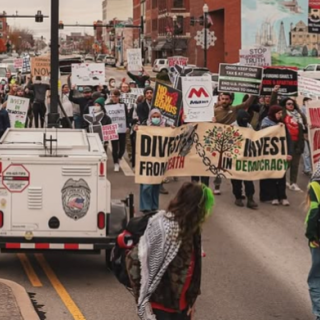Advertisement
Social media has had a huge impact, both negative and positive, on the day-to-day lives of most people who use sites like Facebook, Instagram, and Twitter. Around the world, there are almost 3.5 billion people who use social media — a good portion of whom use these sites every single day. With so many people plugged into social networking, the users and content that is shared on these pages have the potential to reach hundreds of people that any one individual knows. For victims of domestic violence, social media can be a dangerous place where their abusers can both stalk and publicly humiliate their former partners in an effective and far-reaching way.
In the U.S., most people use the internet, with only 11% of the population staying offline. While not everyone who uses the internet also uses social media, a large portion of people use the sites for personal and career networking, which makes it a valuable resource for many people to be a part of. However, this also means that the content shared on social media can easily affect a person’s private and professional life, especially when done with malicious intent.
Domestic Violence in the U.S.Domestic violence occurs when a current or former partner inflicts physical or emotional abuse towards someone with whom they had an intimate relationship with. Every minute, 20 people in the U.S. suffer from domestic violence at the hands of an intimate partner; which is not only dangerous at the time it’s occurring, but puts the victim in danger for more violence in the future.
Someone who is in an abusive relationship runs many risks throughout this period of abuse. Although social media can deeply affect a person’s life, some victims are put in a more direct line of fire, including the risk of being sexually exploited, especially if the domestic violence they’re experiencing is by a current partner. One study showed that in 44% of sexual exploitation cases, the victims were being trafficked by an intimate partner.
According to the University of Nevada, Reno, “Human trafficking is the use of force, fraud, or coercion to obtain some type of labor or commercial sex act.” Around the world, victims of domestic violence are manipulated into sex trafficking schemes, which can pose a large number of dangers for victims, and can be very difficult to escape. Underserved populations are particularly susceptible and at-risk of falling victim to domestic violence and sex trafficking.
How Social Media Hurts VictimsAlthough sex trafficking is more widespread than many people imagine, social media and online abuse is occurring at greater rates than ever before. Perpetrators of domestic violence can use the internet for online harassment and cyberstalking at the touch of a button, and the lack of personal impact or public interaction necessary can make this easier to do.
CyberstalkingStalking is illegal in most places in the world, as it can terrify and endanger victims. In the U.S., stalking laws vary from state to state, but the act is largely considered criminal harassment whether it be through repeated phone calls and messages, or physical stalking. Unfortunately, due to the anonymity of social media, people can secretly stalk others quite easily, unless a person’s profile information is strictly private. Without a private account, a cyberstalker can see everything a person posts without their knowledge.
Revenge PornographyThere are many ways a domestic abuser can harm their victim via the internet, but one of these ways — that is currently in the process of being addressed legislatively from state-to-state — is revenge pornography. Revenge pornography is the nonconsensual sharing of personal sexual or pornographic content. These laws have created consequences for individuals who might want to humiliate a current or former partner by sharing their private photos with others, especially via the internet and social media where it has the potential to ruin their reputation.
How Social Media Helps VictimsAlthough social media poses many threats for victims of domestic violence, and can potentially create circumstances for a former partner to inflict more harm on them, there are some ways these sites can help victims. One of the ways social media can help is in the nature of social media itself, which is by bringing people together, where victims can receive support, not only from friends and family but other people who have experienced similar forms of abuse.
In 2017, the #MeToo movement spread like wildfire across social media, helping thousands of women tell their stories of the abuse they had experienced by strangers, as well as domestic partners. The movement was started by Tarana Burke in 2006, but like so many other trends, it took a special set of circumstances before the message spread far enough to go viral. When it finally did spread, women from all over the world shared the message and hashtag #MeToo, showing their friends and family how commonplace sexual harassment truly is.
Although the #MeToo movement empowered women everywhere to speak out and tell their stories — and even seek legal action against those who had harmed them — many women also faced abuse from onlookers for coming forward. Social media has helped bring many people together and provided women with support, but it also has many potential consequences for users. However, even if you don’t use social media, it can be difficult to escape its grasp. Therefore, it’s best to protect yourself from the bad parts, while trying to keep the benefits.



